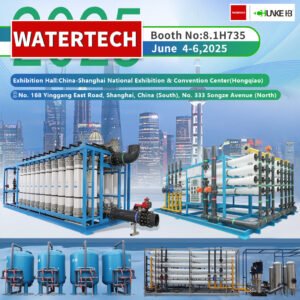Reverse Osmosis & Water Treatment in Brazil
CHUNKE projects of Reverse Osmosis Water Treatment in Brazil including different types of water treatment systems.
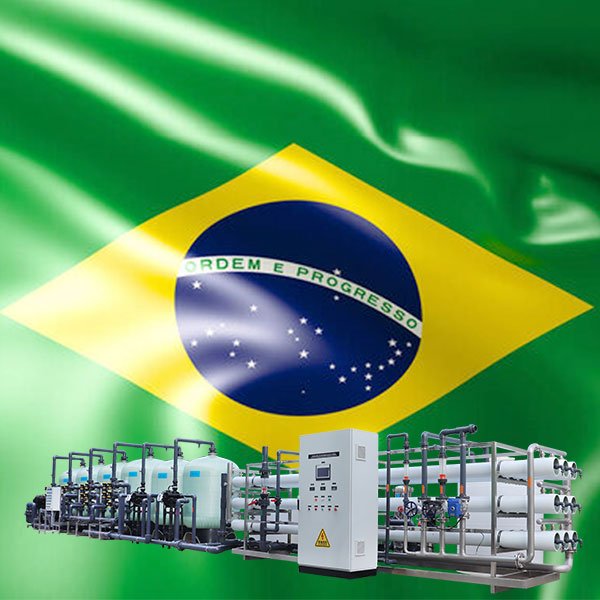
Brazil, known as the Federative Republic of Brazil, is South America’s largest country and ranks fifth globally by area . With a population ranking seventh worldwide, it is also Latin America’s most populous nation . Its capital is the architecturally significant city of Brasília, while São Paulo holds the title for the most populous city . The federation comprises 26 states along with the Federal District . Uniquely in the Americas, Portuguese is the official language . Thanks to over a century of mass immigration, Brazil stands as one of the world’s most multicultural and ethnically diverse nations . Furthermore, it is the most populous nation where Roman Catholics form the majority .
Brazil, as a regional and middle power, is classified as an emerging, major non-NATO ally . Recognised as a developing nation, it boasts a high Human Development Index . With the ninth-largest GDP globally, Brazil is an advanced emerging economy . Additionally, it holds the top GDP spot in Latin America .Being an upper-middle-income economy, as classified by the World Bank, it’s a newly industrialised country . It also maintains the largest share of global wealth in South America . As a key global breadbasket, Brazil has been the leading coffee producer for over 150 years .However, Brazil grapples with notable corruption, crime, and social inequality . Despite these challenges, it’s a founding member of multiple international organisations, including the UN, G20, BRICS, and Mercosul . Furthermore, it’s part of the Organization of American States, Organization of Ibero-American States, and the Community of Portuguese Language Countries .
Total Renewable Water Resources per Capita in Brazil
In 2020, renewable water resources per capita for Brazil was 40,680.4 cubic meters per year. Between 1971 and 2020, renewable water resources per capita of Brazil was declining at a moderating rate to shrink from 88,702.7 cubic meters per year in 1971 to 40,680.4 cubic meters per year in 2020.
- Renewable surface water: 8,647 billion cubic meters per year
- Renewable groundwater: 645.6 billion cubic meters per year
- Renewable water resources: 8,647 billion cubic meters per year
Water Treatment in Brazil: Ensuring Access to Clean Water
We offer a wide range of filtration and economical solutions based on Brazil’s water resources. As a result, our water treatment in Brazil has correspondingly become more popular.
- Surface water is water from river, lake which can be treated using different methods, such as Ultrafiltration Systems, Brackish Water RO accordingly.
- Desalination can be used for water from ocean, or sea source, which can be treated using Sea Water Reverse Osmosis Systems; Desalination Systems
- Ground Water or brackish water is from water located in the pore space of soil and rock “Borehole well”, which can be treated using Reverse Osmosis Systems, Borehole Water Filtration Systems, Well Water Filtration Systems, Chemical Dosing, UV Water Sterilizer accordingly.
- Government water supply, which could have high level of hardness or high level of chlorine, can be treated with Water Softener System, Media Water Filters.
CHUNKE Projects of Water Treatment in Brazil
Meanwhile, CHUNKE designs and produces water treatment systems that meet the World Health Organization requirements. Our pumps, dosing pumps, reverse osmosis membranes, electronic components, and drives are all world-renowned suppliers. So, our water treatment in Brazil is suitable for drinking.
CHUNKE has over 20 years of experience as a global provider of B2B water treatment solutions for a variety of applications and industries. Hence, we offer a large selection of all types of reverse osmosis, ultrafiltration, electrodeionization. And also, water treatment systems to meet your industrial needs accordingly. So, CHUNKE’s extensive global experience in engineering and manufacturing allows us to pre-engineer and customize water treatment in Brazil and reverse osmosis systems to meet a wide range of customer requirements and specifications.
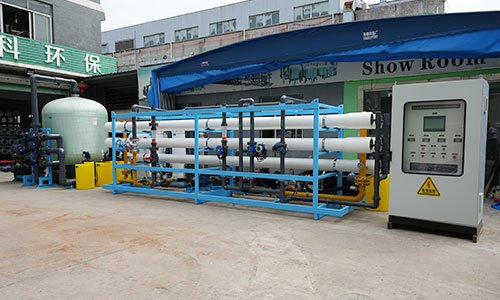
20T Seawater
Desalination
Equipment

40T Reclaimed Water
Reuse
Equipment
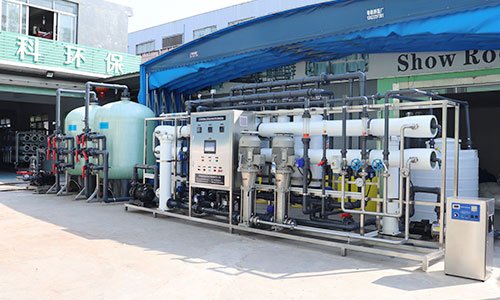
15T Ultrafiltration + 6T Reverse Osmosis
Equipment
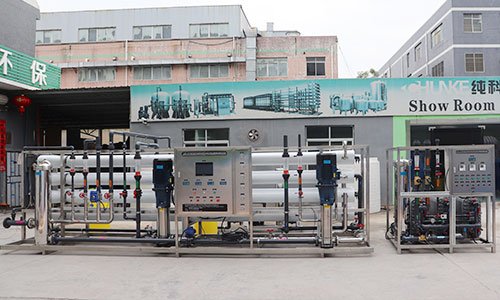
14T Double-stage Reverse Osmosis + 12TEDI Ultrapure Water Equipment
Water Resources in Brazil
Brazil boasts a wealth of water resources, with abundant surface water from rivers, lakes, and wetlands, as well as significant groundwater reserves. However, the distribution of these resources is uneven, with 70% of surface water located in the Amazon region, which is home to only around 5% of the population. The remaining 30% of water resources must meet the needs of 95% of Brazilians (Gerber, 2002). This disparity in water availability poses significant challenges to the country’s water supply, public health, and overall development.
Water Scarcity and Contamination
Despite its vast water resources, Brazil faces water scarcity issues, especially in the Northeast, South, and Southeast regions. The Northeast region, for instance, has a high population growth rate and experiences water deficits, making it particularly vulnerable to water shortages (Leite & Souza, 2013). In addition to water scarcity, water contamination is also a concern in Brazil. The quality of municipal tap water is often questioned, leading to a lack of confidence among the population and a growing demand for water purification equipment.
The Role of Water Treatment Systems
To address the challenges of water scarcity and contamination, water treatment systems have become essential in Brazil. These systems employ various technologies to purify water from different sources, including surface water, groundwater, and even seawater. One of the most widely used methods is reverse osmosis, which effectively removes impurities and contaminants, ensuring safe and clean drinking water.
Reverse Osmosis: A Solution for Clean Water
Reverse osmosis (RO) is a water treatment process that uses a semipermeable membrane to remove dissolved salts, particles, and other impurities from water. It works by applying pressure to the water, forcing it through the membrane and leaving behind contaminants. This process effectively removes contaminants such as bacteria, viruses, heavy metals, and chemicals, resulting in purified water that meets stringent quality standards.
How Reverse Osmosis Works
The reverse osmosis process begins with the pre-treatment phase, where the water undergoes filtration and disinfection to remove larger particles and microorganisms. This pre-treatment ensures the longevity and efficiency of the reverse osmosis membranes. The water then enters a pressure module, where the semipermeable membrane separates the purified water from the concentrated brine solution. The purified water is collected, while the brine is discharged or recycled. Post-treatment processes, such as pH correction and disinfection, may be employed to ensure the water’s quality before distribution (Guerreiro, 2009).
Applications of Reverse Osmosis in Brazil
Reverse osmosis (RO) systems have diverse applications in Brazil, spanning residential, commercial, industrial, and municipal sectors . In residential settings, these systems purify drinking water, ensuring safe consumption for households . Meanwhile, in commercial environments like restaurants and hotels, RO systems provide high-quality water for various needs, including cooking and drinking .Also, in offices, these systems guarantee clean water for daily operations . The industrial sector relies on RO technology for process water applications . This sector includes manufacturing, pharmaceuticals, and food and beverage production . Moreover, the municipal sector uses RO systems to ensure the provision of clean water to the populace .Thus, RO systems play a crucial role in maintaining water quality across various sectors in Brazil .
Advancements in Reverse Osmosis Technology
Reverse osmosis technology has witnessed significant advancements and improvements in recent years, making it a reliable and efficient method for water treatment. These advancements include the development of energy recovery devices (ERDs) that improve the energy efficiency of the reverse osmosis process. Additionally, the reduction in energy consumption has made reverse osmosis a more cost-effective and environmentally friendly solution for water purification. The use of renewable energy sources, such as solar power and biogas derived from urban solid waste, has also gained traction, further enhancing the sustainability of reverse osmosis systems (Azevedo, 2014; Abdelkareem et al., 2018).
Implementation and Impact of Reverse Osmosis Systems in Brazil
For applications requiring ultra-pure water, a double pass reverse osmosis (RO) system is employed. So, this advanced water treatment process involves two stages of reverse osmosis, resulting in even higher water quality. Hence, the first pass removes a significant portion of impurities, while the second pass further purifies the water, producing ultra-pure water suitable for industries such as pharmaceuticals and electronics. Hence, Double Pass RO Water Treatment in Brazil becomes more popular in Pharmaceutical applications.
Chunke is Trusted Water Treatment Supplier from China
Reverse osmosis water treatment plays a crucial role in addressing the water challenges faced in Brazil. By utilizing advanced RO systems and complementary water treatment technologies, clean and safe drinking water can be made available to both military personnel and the local population. Wastewater treatment solutions further contribute to environmental sustainability and public health. Applying the lessons learned from previous water supply operations, Brazil can enhance its water treatment efforts and ensure a sustainable supply of clean and safe drinking water for its people. With the implementation of innovative and efficient water treatment solutions, reverse osmosis continues to be a valuable tool in the pursuit of clean water in Brazil.
Chunke Water Treatment‘s expertise in producing high-quality reverse osmosis systems has contributed to improving water treatment capabilities in Brazil. So, their reliable and efficient RO plants have been implemented in various projects across the country, ensuring access to clean and safe drinking water.

